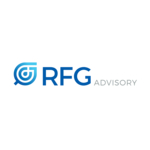Innovation through BaaS and embedded finance
The introduction of open banking and adopting APIs as standard has fuelled the emergence of a diverse financial ecosystem.

Kanika Hope, chief strategy officer at Temenos
Banks, neobanks, fintechs, payment disruptors, and the e-commerce and technology giants are all looking to assert themselves in different parts of the banking value chain.
Speaking to FinTech Futures, Kanika Hope, chief strategy officer at Temenos, explores what this means for the future of financial services.
FinTech Futures: Banking-as-a-Service (BaaS) is becoming a predominant trend in banking. Are new players emerging in the banking ecosystem, and what is the role that banks will play in the future?
Kanika Hope: Built on the foundations of open banking frameworks, BaaS has come into its own since the Covid-19 pandemic. It provides complete banking processes – deposits, loans, payments – as a service from specialist cloud-based, API platforms that use a licensed bank’s secure and regulated infrastructure to deliver financial services at the point of customer need.
This trend came out of the payments industry, and we are now seeing accounts as well as lending introduced into embedded finance. Buy now, pay later (BNPL) offerings are an example of embedded consumer finance. Other examples of this in practice include micro or gig business owners, such as Deliveroo drivers or Uber drivers, having payments made instantly into their bank accounts. Small businesses also benefit from banking products embedded into their standard ERP systems such as QuickBooks.
How do you see the role of challenger banks and fintechs evolving? How are incumbents positioned?
We have heard a lot about the rise of challenger banks and fintechs in the context of them offering superior customer experience and thus attracting customers. But that was pre-Covid-19, pre-recession, and pre-inflation. At this point, both challenger banks and fintechs are being scrutinised on whether they are a safe place to deposit funds and lend responsibly, and on the breadth of services and products they offer. Many challengers are now finding it hard to attract funding and/or turn a profit.
Incumbent banks are also under examination, but it’s worth noting that the primary customer relationship has, for the most part, stayed with them – they have generally retained ownership of the current account and are now more digital and customer-oriented than previously. To that end, it makes sense that fintechs and challengers partner with incumbents.
The BaaS value chain is the most compelling illustration of these partnerships where incumbent banks grow their balance sheet profitably without incurring customer acquisition costs and the fintech or challenger is able to provide licenced banking products to their end customers.
ESG is top of banks’ agendas. How do you see banks bringing ESG into their customer offerings and operations?
ESG is coming to the fore within all segments of the financial services industry. Values-driven customers and regulators are together driving banks to embed ESG throughout their entire value chain.
We are now at the stage where we have many examples of banks’ ESG offerings, such as reducing the carbon footprint of a business, investing using ESG metrics, green financing, responsible lending, sustainable business operations, and the like.
This is not just about sustainability; it is also about inclusion and diversity. Financial inclusion and wellness are very important topics. For example, HSBC has introduced a no-fixed address bank account for the homeless, while Santander has an in-app charity marketplace and debit card for carers. There has been substantial cultural change, and the direction of travel is one way – more ESG.
Digital transformation is here to stay. Where do you see banks investing their IT budgets?
Digital transformation continues to act as a force for disruption. The technologies that banks are now grappling with – AI, the cloud, and APIs – all act as a force for change within banks, and all are exacerbating pressures that banks have always faced – nimble new competitors, regulators pushing for innovation and competition, and customers expecting more tailored and personalised services. SMEs want a service that is akin to the levels they would get within corporate banking and wealth clients want to have a digitally enabled hybrid service. In short, banks have to do more in terms of service proposition and delivery no matter what the segment.
Embedded finance is one answer. It offers the means to transform and extend the service offering and reach new segments without having the hassle of actually owning the customer. There are some hard decisions to make over where to invest and in what order, but data forms a key component of any service. Cloud architecture is another good investment for a cleaner, more cost-effective, flexible, and secure business model that can scale.
What are the drivers and benefits for cloud and Software-as-a-Service (SaaS) adoption?
The case for the public cloud is becoming more and more apparent. Post-pandemic, there have been record levels of cyber-attacks, so security is now front of mind. Hyper-scaled public clouds are the safest place to house data, and using a multi-cloud approach spreads the risk further. For that reason, any software does need to be cloud agnostic to mitigate risk at the highest level.
The cloud also addresses the green agenda. It can help firms reduce their carbon footprint due to its ability to scale up and down and run efficiently. As an example, banks running on Temenos Banking Cloud, our SaaS offering, benefit from more than 95% lower carbon emissions over traditional on-premise infrastructures. SaaS further enables a modular approach, which means it can be easily and continuously maintained and updated.
How is Temenos technology supporting banks to modernise?
We give our clients the software and tools to innovate and the ability to take what they need, configure it as they see fit, and use as much or as little as they want. In doing so, we create tangible business value by enabling our customers to innovate and grow their businesses.
As an example, a global payments provider used us to launch its BNPL service and has now reached 30 million BNPL consumers, which equates to 200 million loans; this was the fastest start to any product launch in the company’s history.
As another example of us driving a business forward in the corporate banking and wealth space, we formed a long-term strategic digital transformation partnership with a large European bank in 2012, and the Temenos Banking Cloud deployment there has helped it drive innovation and grow its international business by 300%.
Sponsored by Temenos











































